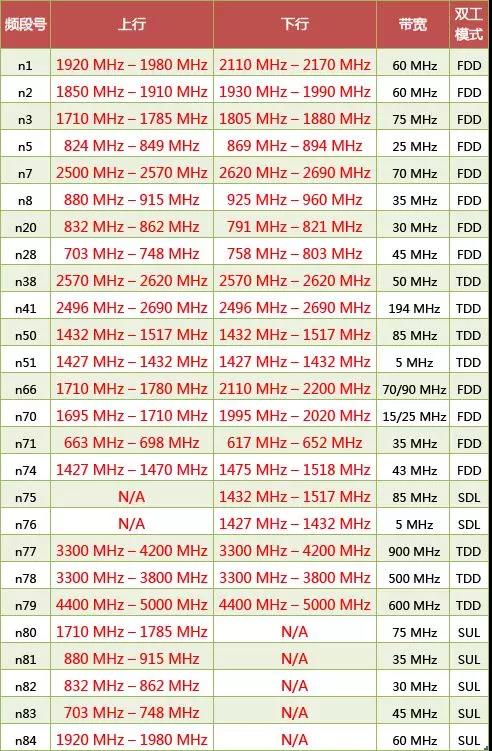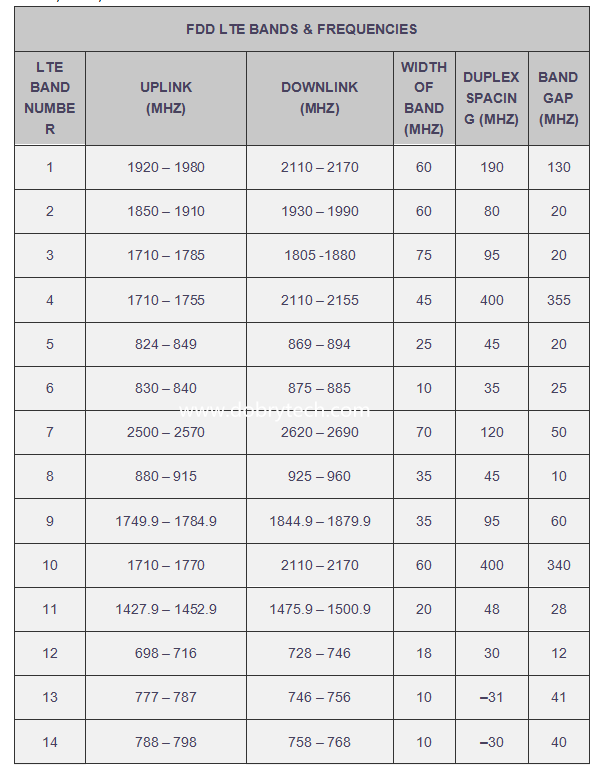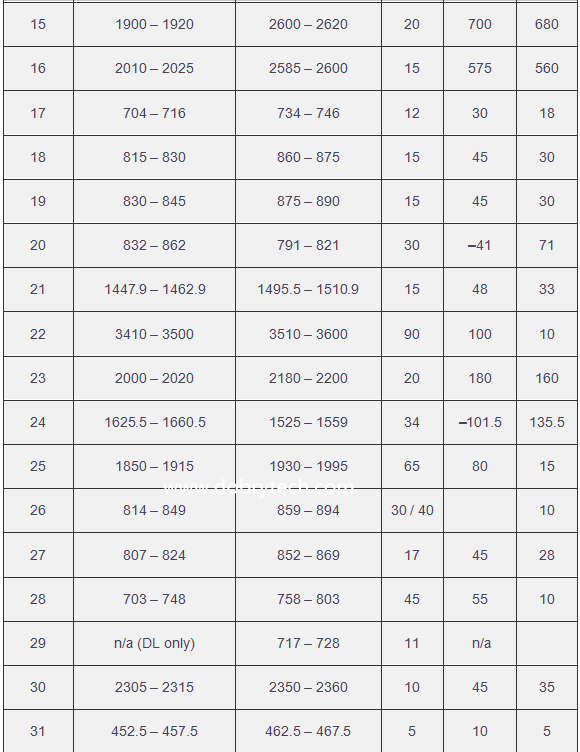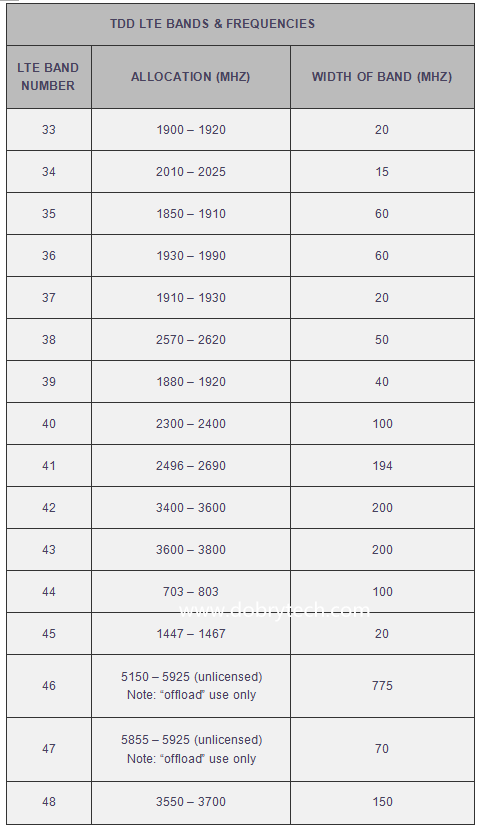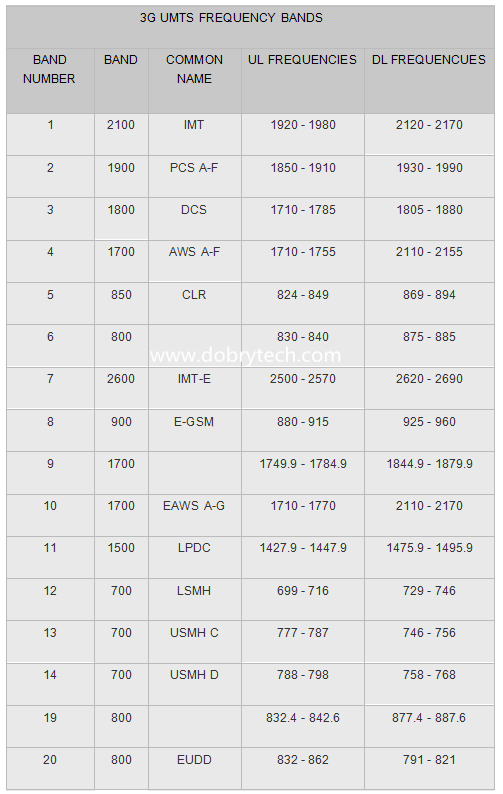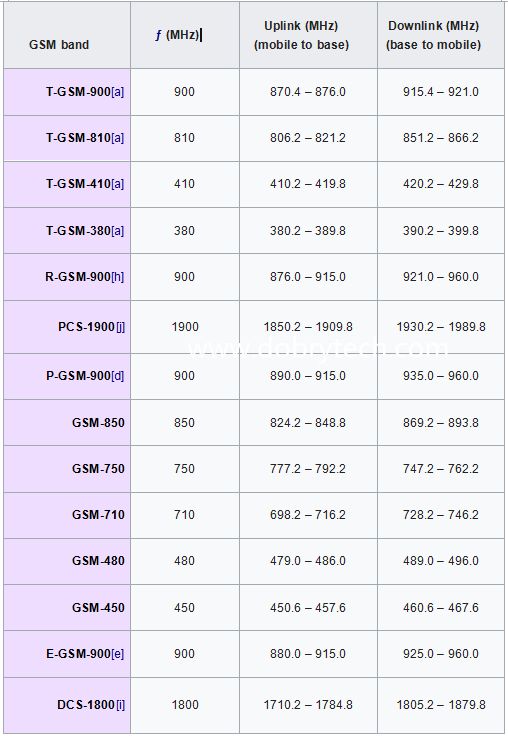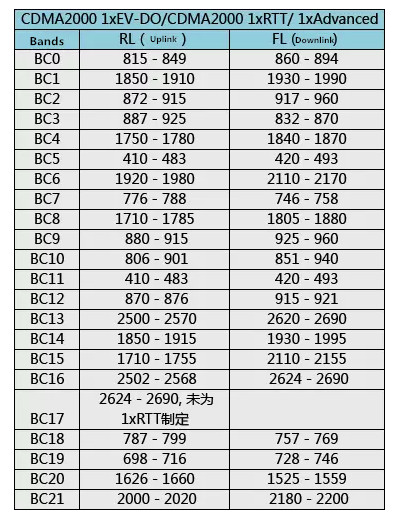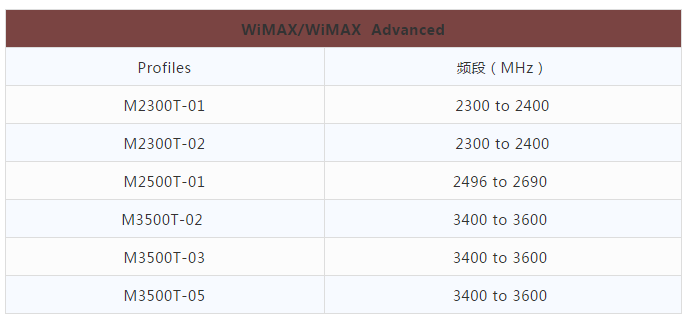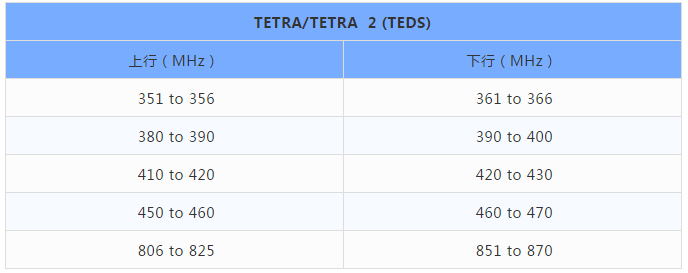5G NR
3GPP has specified a list of bands supported by 5G NR (see section 3.8 of TS38104). The 5G NR spectrum ranges up to 100 GHz and specifies two frequency ranges:
| Item | Frequency range |
| FR1 | 450Mhz-6000Mhz |
| FR2 | 24250Mhz-52600Mhz |
Frequency range 1 (FR1): We usually talk about the frequency band below 6GHz
- Frequency range: 450MHz – 6.0GHz
- Maximum channel bandwidth 100MHz
Frequency range 2 (FR2): millimeter wave band
- Frequency range: 24.25GHz – 52.6GHz
- Maximum channel bandwidth 400MHz
5G NR supports 16CC carrier aggregation.
Since the 5G NR defines flexible subcarrier spacing, different sub-carrier spacings correspond to different frequency ranges, as follows:
| Sub-carrier interval | Frequency range | channel bandwidth |
| 15kHz | FR1 | 50Mhz |
| 30kHz | FR1 | 100Mhz |
| 60kHz | FR1, FR2 | 200Mhz |
| 120kHz | FR1 | 400Mhz |
The 5G NR band is divided into: FDD, TDD, SUL and SDL. SUL and SDL are Supplementary Bands, which represent uplink and downlink respectively.
Unlike LTE, the 5G NR band number identifier starts with “n”, such as LTE’s B20 (Band 20), and 5G NR is called n20.
The 5G NR bands currently specified by 3GPP are as follows:
FR1(450MHz-6000Mhz):
FR2:
As shown in the above figure, the 5G NR includes some LTE bands, and some new bands have been added. Currently, the 5G bands most likely to be deployed in the world are n77, n78, n79, n257, n258 and n260, which are 3.3GHz-4.2GHz, 4.4GHz-5.0GHz and millimeter-wave bands 26GHz/28GHz/39GHz.
4G LTE
4G LTE TDD BANDS & FREQUENCIES
3G UMTS WCDMA
3G TD-SCDMA
2G GSM
CDMA
WiMAX
Public safety

